The Nightmare on Wilton Place reaches a happy ending
 Three years ago, I had the sad duty to report on the “Nightmare on Wilton Place,” the willful destruction of the interior of 215 S. Wilton Pl., Historic Cultural Monument #568. As
Three years ago, I had the sad duty to report on the “Nightmare on Wilton Place,” the willful destruction of the interior of 215 S. Wilton Pl., Historic Cultural Monument #568. As
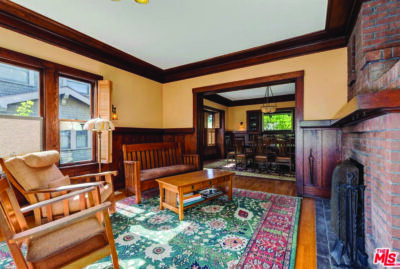
ORIGINAL living room in 2021.
City Planning’s Office of Historic Resources’ Lambert Giessinger described it, “It was one of the most egregious cases of demolition I have ever seen.” It was a shock that struck at the heart of the community preservation values in the Wilton Historic District. What made the demolition even further of interest was that it was a violation of the property’s Mills Act Contract, which carried with it substantial penalties, which, to the city’s credit, the city moved quickly to enforce.
For Marita Geraghty, the former owner of 215 S Wilton Pl., who had sold it to buyers who she was assured would be respectful stewards of the home that she and her former husband had lovingly restored and maintained, it was an ultimate betrayal. Neighbors reported dumpsters full of century-old oak flooring, fine paneling, light fixtures and bricks. Pictures would later reveal that the first and second floors had been brought down to the studs, a complete erasure of the historic interior of a designated landmark.
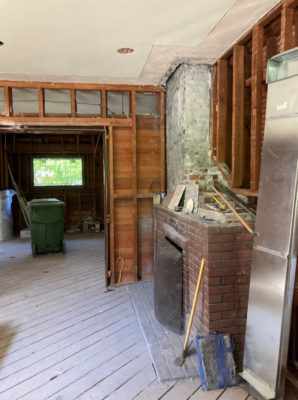
DESTROYED living room in 2021.
Stop work
The damage was halted when the Office of Historic Resources, Council District 13 and the City Attorney jumped into action. A complete reconstruction of the lost interiors was ordered under the management of a preservation architect, and a subcommittee of the city’s Cultural Heritage Commission was formed to monitor progress. Work was slow and painstaking at the start, with the property owner slow to comply. But the architectural talent and diplomatic skill of preservation architect Michele McDonough, a specialist in Craftsman houses, got the project moving.
Marita Geraghty contacted me recently with some intriguing news: the restoration of the home was nearly complete. She had been given the opportunity to view the work of which she commented, “The story has as happy an ending as we could have hoped for, considering how devastating the destruction was. The firm brought in to do the detail work — extensive wood panels on the walls, all the moldings, recreating the pocket doors, rebuilding the fireplace and the original built-ins (many with leaded glass)…. It was a large, difficult job. Having been to the home, I am feeling very grateful that almost all of it looks right. It doesn’t look exactly right, because old-growth wood was removed. The wood looks new. The floors don’t have the amazing patterns that the original oak did, but, still, it’s a miracle that it got to this point.”
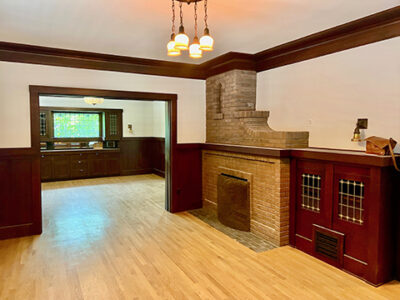
RESTORED living room.
Intrigued, as I say, I wanted to see the work for myself. I reached out to Michele McDonough who agreed to meet me for a walk-through. When I arrived, Ms. McDonough greeted me with Roy Yun, the perpetrator of the original demolition, who looked rather sheepish. Entering the house is almost like stepping back in time or onto a movie set. The work was superb and to a high standard — smooth, crisp and glowing, like new — as the house must have felt when first built.
Construction on the project was carried out by KC Restoration, under the direction of Steve Lehne. While some elements like the fireplace brick and the lighting could be salvaged, almost everything else was new. Beautiful oak floors were installed on the first floor and maple on the second. Flat-sawn fir paneling stained dark as black coffee adorned the walls. The built-in furniture was recreated with new leaded glass. The project also included accommodation to modern living with the installation of a new kitchen and three new bathrooms. The kitchen reused some original cabinetry with new cupboards, respectfully echoing the historic carpentry. The project team is still awaiting final sign-off from the Cultural Heritage Commission, but there is ample light at the end of the tunnel.
The level of craftsmanship and quality of the materials could not have made the cost of this restoration anything less than astronomical. An enormous penalty has been paid for the damaging of a home that should have been treasured. This is the lesson that must be imparted to sellers, buyers and real estate agents for historic properties. An understanding of preservation regulations, benefits and obligations must be shared by all parties to avoid preventable consequences. All must be made to know that a house is not merely being exchanged, but a torch is being passed, and a responsibility for stewardship is being assumed, and that the burden of a historic property is not light, but is always worthwhile.

DINING ROOM as sold in 2021.
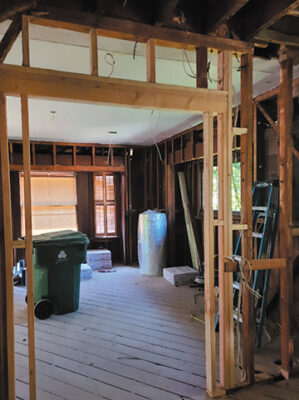
DEMOLISHED historic dining room in 2021.
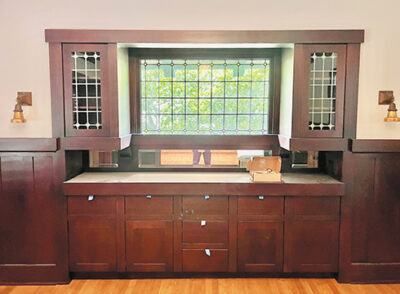
RESTORED dining room window and cabinets.
Category: Real Estate
